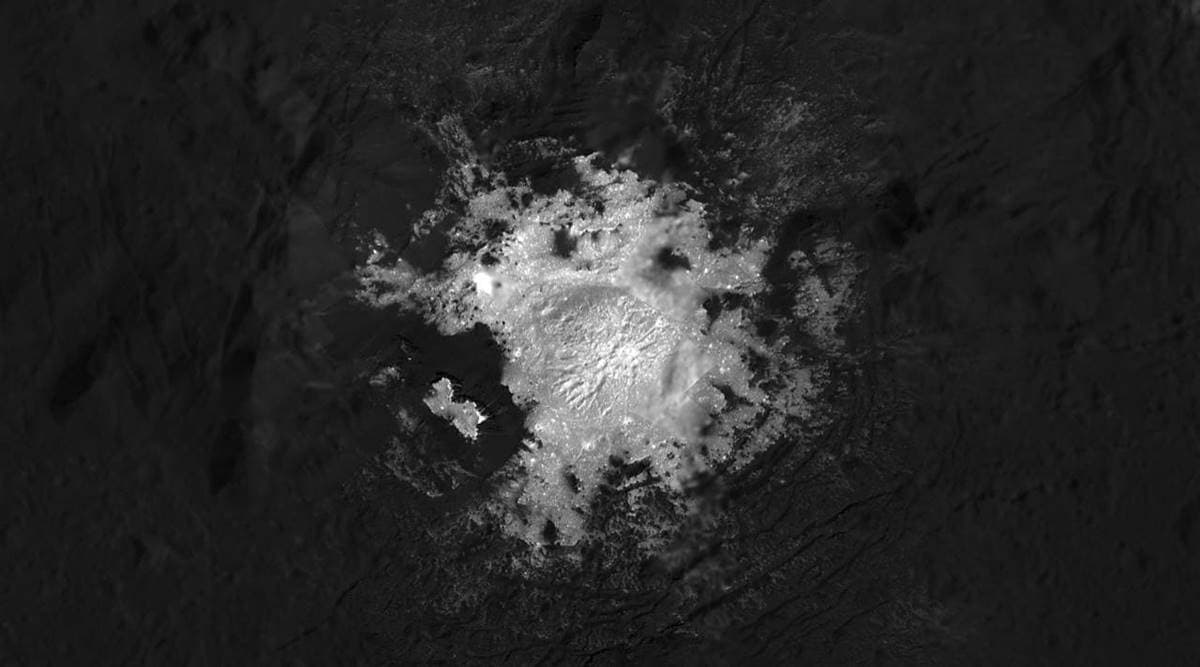 dwarf planet Ceres' Occator Crater is based on images obtained by NASA's Dawn spacecraft (Source: NASA/JPL-Caltech)
dwarf planet Ceres' Occator Crater is based on images obtained by NASA's Dawn spacecraft (Source: NASA/JPL-Caltech)The largest celestial object in the asteroid belt between Mars and Jupiter, Ceres is said to have salty water underground. The scientists have given Ceres the status of an “ocean world” as it has a big reservoir of salty water underneath its frigid surface. This has led to an increased interest of scientists that the dwarf planet was maybe habitable or has the potential to be.
This new understanding of the dwarf planet, Ceres has been made possible because of the data collected by NASA’s Dawn spacecraft when it flew just 35 km over the surface of Ceres in 2018.
“This elevates Ceres to ‘ocean world’ status, noting that this category does not require the ocean to be global,” said planetary scientist and Dawn principal investigator Carol Raymond. “In the case of Ceres, we know the liquid reservoir is regional scale but we cannot tell for sure that it is global. However, what matters most is that there is liquid on a large scale.”
Ceres has a diameter of about 950 km, which is more than one-fourth of Earth’s moon. The main focus of the scientists was the 92 km wide crater named Occator located in Ceres’ northern hemisphere. This crater is said to have formed by an impact approximately 22 million years ago.
The scientists came to the conclusion that the salty water originated in a brine reservoir spread hundreds of miles and about 40 km beneath the surface. The salty water was discovered because of the cracks created to form the crater.
“There is major interest at this stage,” said planetary scientist Julie Castillo of NASA’s Jet Propulsion Laboratory, “in quantifying the habitability potential of the deep brine reservoir, especially considering it is cold and getting quite rich in salts.”
On the other hand, Ceres is not the only celestial body in our solar system where subsurface oceans are known to exist. Jupiter’s moon Europa, Saturn’s moon Enceladus, Neptune’s moon Triton, and the dwarf planet Pluto are also on the list. However, every time the existence of water is confirmed on a celestial object, it gives scientists a new ray of hope and means to understand the history of our solar system.